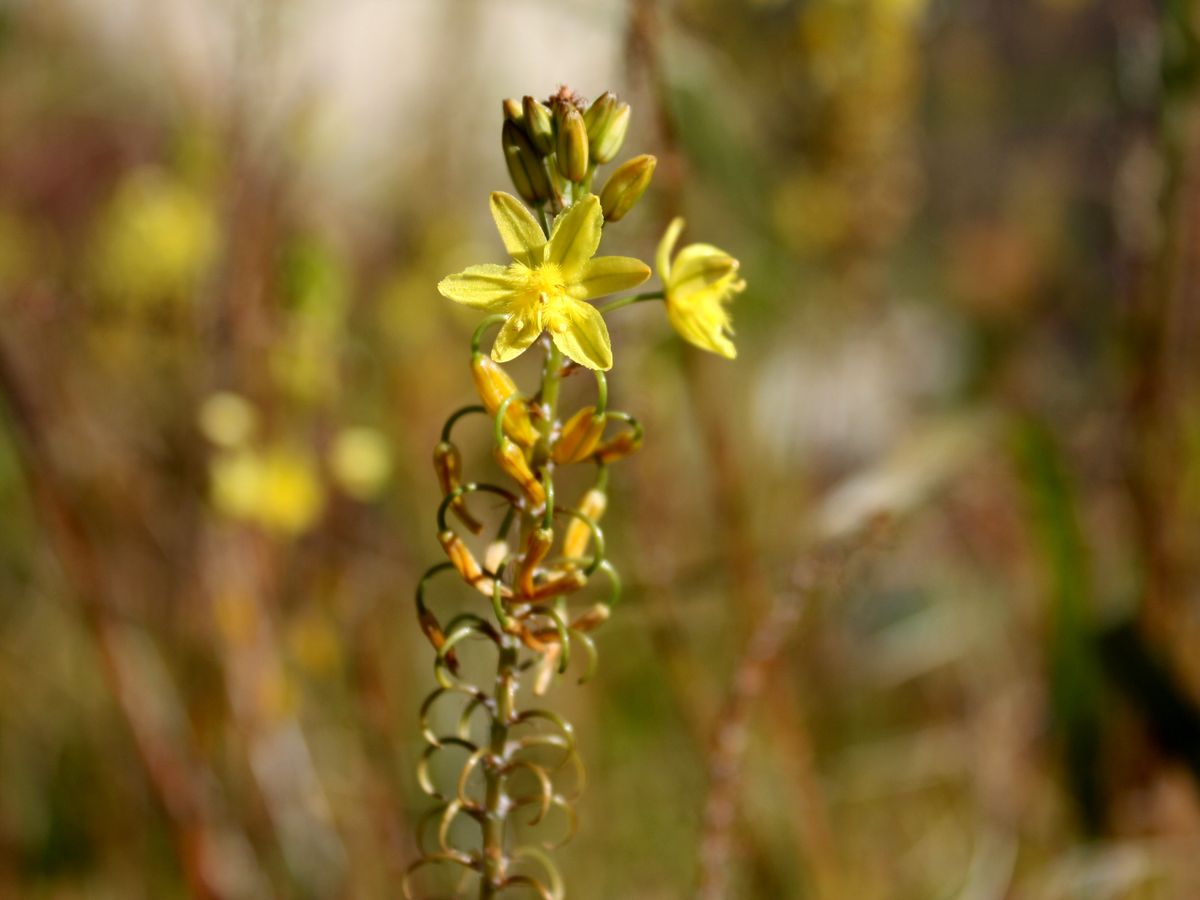Bulbine frutescens
Scientific name: Bulbine frutescens Willd.
Family: Asphodelaceae
Common name: Yellow bulbine, snake flower
It is an evergreen herbaceous plant native to the eastern Cape Town, South Africa. The name of the genus comes from the Greek and refers to a bulb, although bulbine is not a bulbous plant; but the resemblance of its leaves to those of the onion may initially have been misleading. Frutescens comes from the Latin word frutescere, which means that it produces shoots, that is, it expands generously.
The leaves are linear, succulent type, reaching about 40 cm in height. In the stems it has adventitious roots that help it to expand, so it forms masses very appreciated in gardening to cover areas, or for rockeries or borders. The flowers are borne in a terminal raceme; they are small, with 6 petals, usually yellow, although they can also be orange, in the center of which stands out a mass of intense yellow stamens.
It is a fast-growing species, which can be easily propagated by cuttings. It flowers in spring, with more abundance if it is in full sun, although it can also be placed in semi-shade. Medicinal virtues are attributed to it, especially for the skin. In La Concepción you can see it in the Around the World in 80 Trees and in the hibiscus walk.

